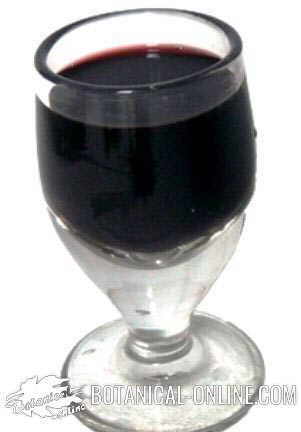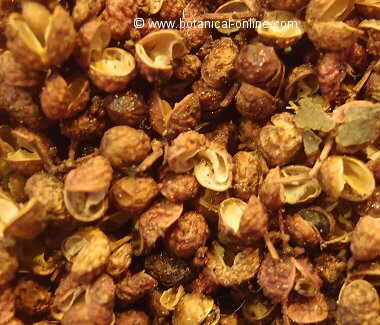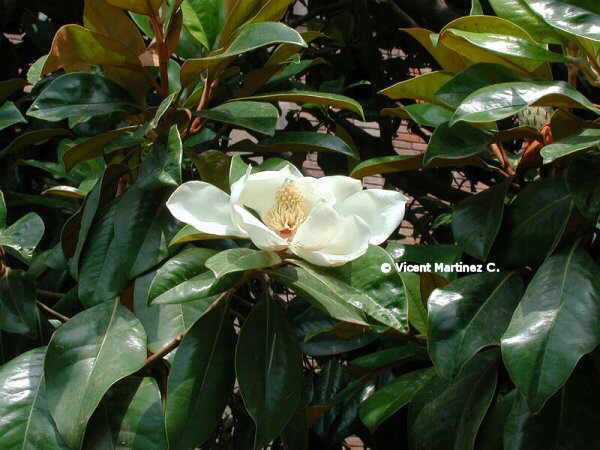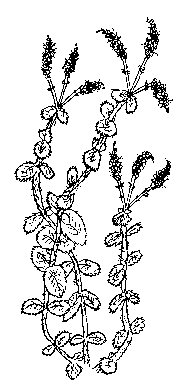Contents
- 1 Traditional remedies with sarsaparilla
- 2 EUROPEAN SARSAPARILLA USES AND BENEFITS
- 2.1 What has Smilax aspera been used for?
- 2.2 Sarsaparilla to purify the organism
- 2.3 Sarsaparilla for the retention of liquids
- 2.4 Sarsaparilla for rheumatic diseases
- 2.5 Sarsaparilla for skin diseases
- 2.6 Sarsaparilla for diseases of the urinary tract
- 2.7 Sarsaparilla for seasonal depurative treatments
- 2.8 Sarsaparilla for contagious diseases
- 2.9 Sarsaparilla for the external treatment of skin diseases
Traditional remedies with sarsaparilla
There are different species of sarsaparillas throughout the world, many of which have been used since antiquity for their phytotherapeutic properties. When the Spanish colonizers arrived in America, they saw that the natives used the roots of lianas of sarsaparillas to treat different diseases. (See sarsaparilla species with medicinal properties)
They were native sarsaparillas that looked very much like the European one, hence they were named after the same name. These American species were used mainly to cure rheumatic diseases, to treat externally the skin, and as a general enhancer or tonic. The tribes of the Amazon Basin used it to fight leprosy, psoriasis or dermatitis.
In the sixteenth century, some American species were taken to Europe, where they soon became very prestigious and recognized medicinal plants. The species Smilax officinalis was widely used to combat syphilis, gonorrhea and other sexually transmitted diseases.
Ancient bibliographical citations of sarsaparilla

The English physicist and apothecary Nicholas Cullpeper (1616 – 1654) describes it extensively in his “Complete Herbal”. Referring to its properties, it says:
“Somewhat hot and dry, helpful against pains in the head, and joints; they provoke sweat, and are used familiarly in drying diet drinks”.
The famous Spanish botanist Celestino Mutis y Bosio (1732-1808) in his “Arcano de la quina”, a posthumous work published in 1828, talks about the advantages of combining this plant with sarsaparilla:
… “preferred in cases of inflammation, which can be associated with sarsaparilla, which combination is a very effective remedy to combat the catarrhal infection.There is still more to be promised of these tisanes, if mixed with milk, whose use is very beneficial to measles. “
No less interesting is the discussion on the etymological origin of sarsaparilla by Pedro Felipe Monlau, Professor of Literature and History at the University of Barcelona in his “Etymological Dictionary of the Castilian Language”, published in 1856:
“It is the Smilax sarsaparilla of Linnaeus, a plant that grows spontaneously in Peru, in Mexico and throughout South America: its root is medicinal, some say that the first to bring it to Europe was a Spanish doctor named Parillo, and that this proper name added to the one of zarza formo bramble-grill.”
The French call it salsepareille or sarzepareille, and some etymology of their nation has said that this voice was formed of sarse, sarze, French bush of bramble, and of the adjective pareil, even, similar, similar; that is, similar to the bramble. Botanists give Europe’s sarsaparilla the generic-specific designation of rough Smilax; and there are those who believe that it is also possible that the vulgar began by saying bramble-bush, and then bramble-sprinkle, and finally sarsaparilla.
To all these conjectures I want to add a new one: Since the flowers of the sarsaparilla are clustered, and have incarnate berries similar to the grapes of the wild grapevines, would it not be possible that the clement juxtaposed grill was a diminutive of vine? “
Sarsaparilla for venereal diseases
The truth is that this type of linguistic discussions was not strange for a plant whose fame was very high during the nineteenth century, a period in which its use extended both in Europe, and in the United States, China, Thailand, Vietnam, the Philippines and Cambodia , used as a remedy to treat diseases of venereal transmission, especially syphilis.

This treatment was included in the U. S. Pharmacopea from the beginning of the 19th century until the beginning of the 20th century. All this propitiated a very high trade between the producing nations and the European countries.
Joaquín García Icazbalceta (1825-1924), Mexican writer and historian, in his book “Collection of documents for the History of Mexico” (1958), referring to syphilis, then known as bad French or evil of the bubas, writes:
“In this dry part you can find trees that are different from those of the other part, such as guayacán, which is a tree with which those who have the evil of the bubas, which here are called infinite, are cured; They have brought soldiers and people who have only recently come from Castile, but now they have found a herb called sarsaparilla, and with it they have healed many and cured from the same disease, there is a lot of this sarsaparilla here” .
It was then well recognized its ability to cure venereal diseases and to purify the blood and use it as an effective remedy against gout, arthritis or hypertension.
Her ability to cure skin conditions made her very famous in the external treatment of psoriasis and the healing of wounds.
It was also used to reduce sweating or eliminate fever and stomach problems.
Properties of medicinal sarsaparilla in traditional medicine
Sarsaparilla is a plant with diuretic properties due to its content in saponins. It is used for its digestive, appetizing and depurative properties. In animal studies, it has shown anti-inflammatory and hepatoprotective activity. It is traditionally used in the treatment of psoriasis and skin conditions.
Does Smilax aspera have the same properties than Smilax officinalis ?
At present, some specialists believe that European sarsaparilla (Smilax aspera) contains the same properties as medicinal sarsaparilla (Smilax officinalis) although it is less potent.
In fact, many preparations labeled Smilax officinalis are adulterated with the inclusion of the European species.
Other specialists think that the European plant has very few properties. This last opinion has supposed a greater use of tropical species and a poor exploitation of the European species. The European Commission considers that its uses are unproven and discourages its use both for its possible ineffectiveness and for the risks that its use may entail.
EUROPEAN SARSAPARILLA USES AND BENEFITS
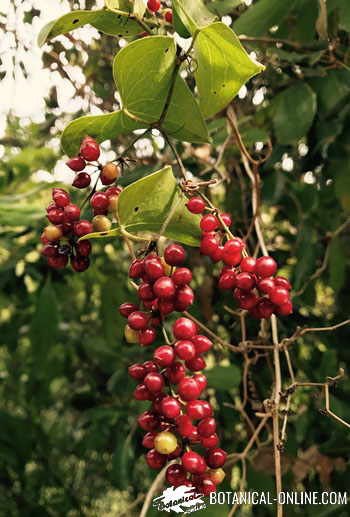
What has Smilax aspera been used for?
European sarsaparilla has traditionally been used for the following purposes:
Sarsaparilla to purify the organism
The purification capacity of this plant is mainly due to the diuretic properties that their minerals calcium, potassium and magnesium provides.
The flavone-rich essential oil helps in this function by stimulating the cell walls of the kidneys. Its ability to increase diuresis or urine production is added to its diaphoretic properties, ie its ability to increase body sweat.
All this contributes to eliminate liquids from our organism, which makes it an adequate plant in the following diseases:
Sarsaparilla for the retention of liquids
Suitable to treat the problems of fluid retention in the body and the appearance of edema. This same property makes it suitable to help on the treatment of diseases in which the elimination of liquids improves their symptoms , such as cellulite, obesity or hypertension.
In addition, sarsaparilla has effects to reduce cholesterol, since saponins prevent its absorption (Maceration for 12 hours of 2 tablespoons of dried root in half a liter of water Decoction of maceration for 20 minutes Take a couple of glasses a day for a maximum of 15 days).
Sarsaparilla for rheumatic diseases
The elimination of liquids improves the symptoms of rheumatic diseases by helping to eliminate serous accumulations in the joints, which improves the mobility of patients and reduces pain.
Its has been used in diseases such as gout, rheumatoid arthritis, osteoarthritis or uric acid. (Maceration for 12 hours of 2 tablespoons of dried root in half a liter of water Decoction of maceration for 20 minutes Take a couple of glasses a day).
Sarsaparilla for skin diseases
Its depurative capacity makes it a good remedy for the treatment of skin abnormalities in which, in most cases, they manifest as a result of an excess of toxins in the body.
Among them we can mention acne, itching, eczema, or dermatitis. Sarsaparilla is widely used as a coadjuvant in the natural treatment of psoriasis. It has also been used to combat other skin diseases such as herpes and leprosy. (Use the previous treatment)
Sarsaparilla for diseases of the urinary tract
Its diuretic capacity, as well as the antiseptic properties of zinc and ascorbic acid, together with the antibacterial capacity of beta-sitosterol, make it an appropriate ally for the treatment of diseases of the urinary tract.
It has been used to prevent or treat inflammations of the kidneys and urinary bladder and for the prevention or treatment of kidney stones. (Decoction for ten minutes of a teaspoon of sarsaparilla root per glass of water Take a couple of glasses a day before the two main meals)
Sarsaparilla for seasonal depurative treatments
It is sometimes used as a general cleanser before seasonal changes or in situations where the body requires a general cleaning. (Take drops of fluid extract for sale in specialized stores according to the conditions of the patient’s leaflet)
Sarsaparilla for contagious diseases
Internal use has traditionally been used for the treatment of syphilis, gonorrhea and other diseases of venereal transmission. The use of this plant was combined with the application of mercury. Later this use was abandoned.
It was also used in the 19th century in the treatment of leprosy. Although there are no scientific studies on the effectiveness of this plant in the treatment of this disease, if it has been done in other species of sarsaparilla with positive results.
Sarsaparilla for the external treatment of skin diseases
It is used externally for its antibacterial and antifungal properties in the treatment of psoriasis, eczema or wound healing. (Decoction of a spoonful of dried root per cup of water Apply the liquid of this decoction to the affected areas)
![]() More information on smilax or sarsaparilla
More information on smilax or sarsaparilla


